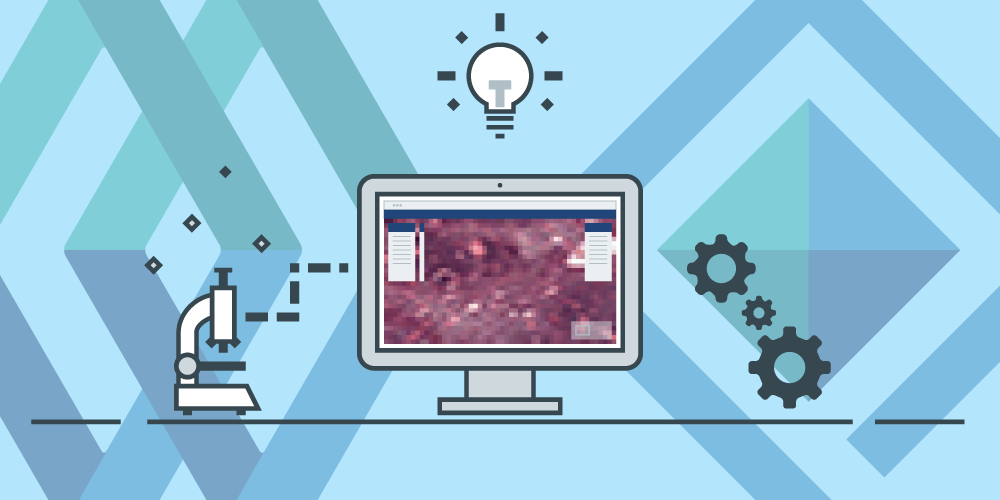What’s the next big advancement in digital pathology? We think it centers around multiplexed imaging and improved data management. Read on.

The arrival of the first digital slide scanners heralded an exciting new age for clinical and research pathology. The promises of digital archiving, data sharing, interactive viewing, and automated analysis are all enabled by this single technological revolution. In 2017, there is a rich selection of sample processing and prep robots, scanners, and analysis tools available as turnkey, commercial systems. The discussions around implementing digital pathology have evolved from “Does it work?” to “Can we make it work in our institution?” and to perhaps most importantly “What’s the value proposition for our patients, clinicians, scientists, and funders?” It is a very exciting time in the field and one that Glencoe Software is pleased to help drive and advance.
Since 2005, Glencoe Software has built and delivered applications for large-scale image data management, analysis, sharing, and publication for the academic, biotech, and pharma sectors. We are unique: we are the only provider in the market that leverages a proven open source foundation to build enterprise, scalable, and flexible image data solutions for our customers. We start with technology platforms from the Open Microscopy Environment (OME) and deliver world-class tools that create knowledge from image data. The breadth of our experience is unparalleled, so we can integrate know-how and tech from many different fields and transfer them into exciting new domains, in this case, digital pathology
We are quite excited about the development of multiplexed imaging capabilities in digital pathology. In these approaches, preparations of tissue are stained so that many different biological pathways and response systems can be measured in a single sample. Multiplexed imaging heralds a new age of digital pathology where the knowledge of the tissue structure gained by H&E staining is combined with comprehensive analysis of cell signaling, proliferation, apoptosis, and infiltration. In a single slide it is now possible to combine measurements of tissue architecture, proliferation potential, and immune response and transform the information derived from a single sample.
Of course, sharing and processing images with >40 channels and hundreds of Gbytes isn’t easy. At Glencoe Software, we have developed data management and processing technologies that enable sharing, annotation, processing of these data. In the next few weeks we will announce new products and new capabilities in this very exciting domain. As always we look forward to making contributions to the technical developments but also to discoveries and diagnosis in the life and biomedical sciences.
